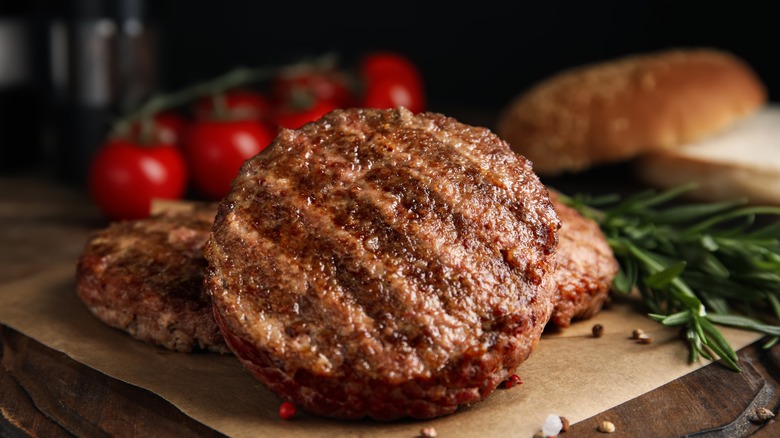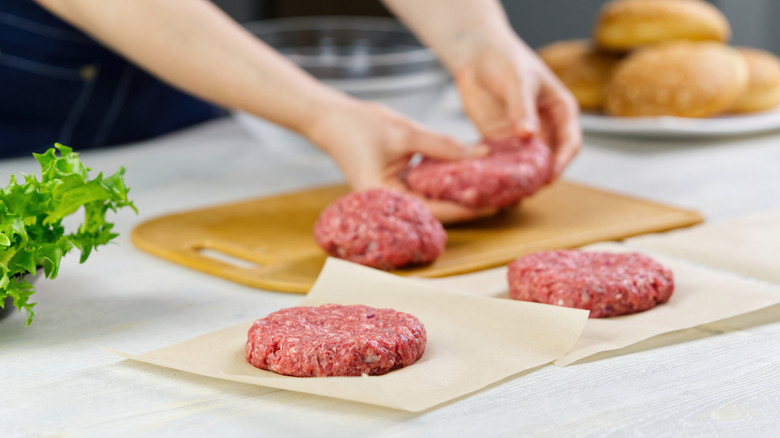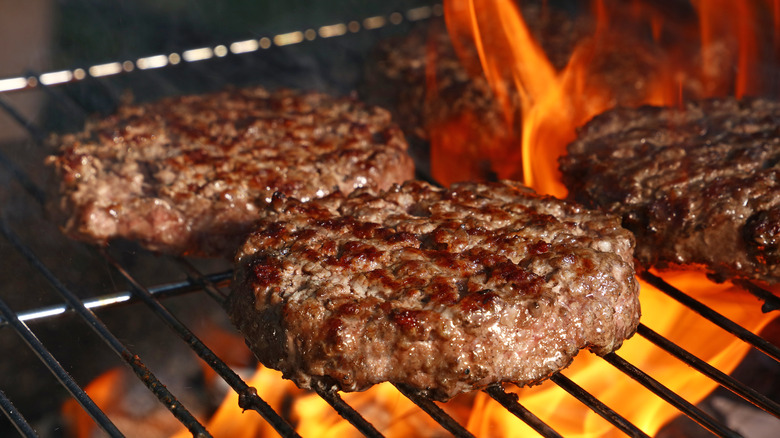A Thumbprint Easily Prevents Your Burgers From Turning Into Meatballs
Convex burger patties are not where it's at — and not just because they look weird. The misshapen patties result in an unequal distribution of meat between the buns, complicating the task of keeping the veggies and other burger fillings evenly distributed as well. However, sometimes, no matter how flat the raw patty appears, the meat ends up ballooning in the middle during the cooking process. While it might be tempting to use a spatula to press the meat back down and flatten it, this method essentially squeezes the juices out of the burger. And since those juices contain a lot of the flavor, the resulting burger ends up less tasty than it could have been.
However, there's a way to avoid this issue. Believe it or not, the key to the perfect burger is not striving for perfectly flat patties. When a burger patty is placed on a hot skillet or grill, the outside perimeter tightens up — becoming denser and smaller at the same time. Meanwhile, the meat's juices move toward the center, causing the undesired ballooning. To prevent this, make an indent in the middle of the raw meat with your thumb. It might seem odd at first, but this simple step makes all the difference. By the time the patty is fully cooked, there will be no sign that the thumbprint was ever there, and the patty will look and taste as good and juicy as an all-beef burger from just about any restaurant.
A simple solution for puffy burgers
Since the natural cooking process of the burger — where the outside rim shrinks and tightens while the juices collect and swell in the middle — cannot be changed, it's crucial to counteract this uneven cooking effect as much as possible. That's the role of the dimple. Aim to create an indentation about a quarter inch deep compared to the rest of the patty. This depth is sufficient to compensate for the inevitable puffing up.
This tip is applicable not only to patties made from ground beef, but also to those made from lamb, pork, turkey, chicken, and custom burger blends of two or more types of meat. Since the proteins will bind around the outside and cause the center to puff up regardless of the type of ground meat used, a thumbprint will improve all types of burgers. This technique is particularly important when working with ground meats that have a higher fat content, such as lamb, which tends to swell up even more in the center.
Other ways to avoid shrinking patties
In addition to the rounded meatball shape that homemade burgers are often prone to taking, they also tend to shrink up a lot in general. But, it is possible to limit this shrinkage to a certain extent. One way to do so is by avoiding ground beef with a super high fat content, such as 70/30. Although more fat does give tastier results, too much will result in burger patties that lose a lot of volume. Still, you don't want to go too lean, or they won't be juicy enough — an 80/20 ratio is a good place to start.
Another way to avoid heavy shrinkage is by freezing those patties before cooking them. Since it will take the center longer to cook this way, there will be less shrinking involved. Just be sure to make that thumbprint in the middle before putting the raw burgers in the freezer.



